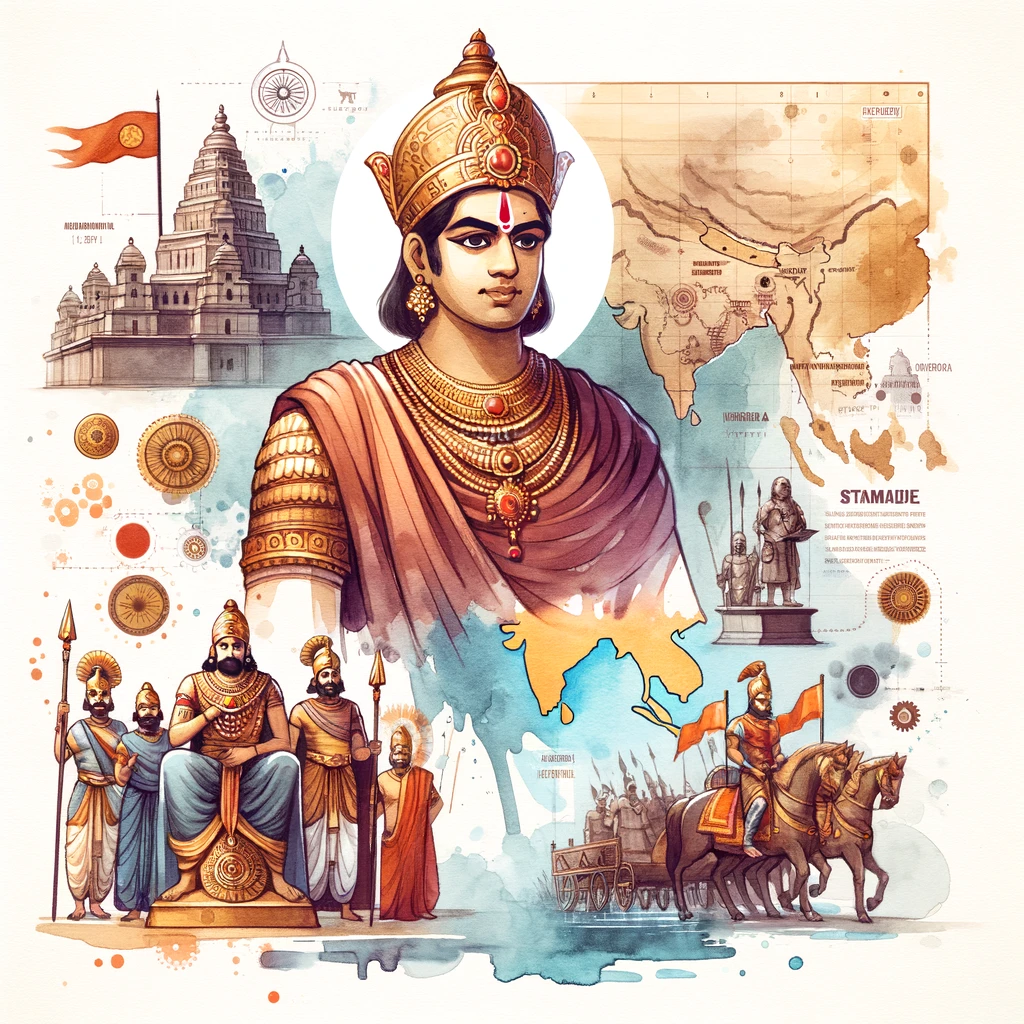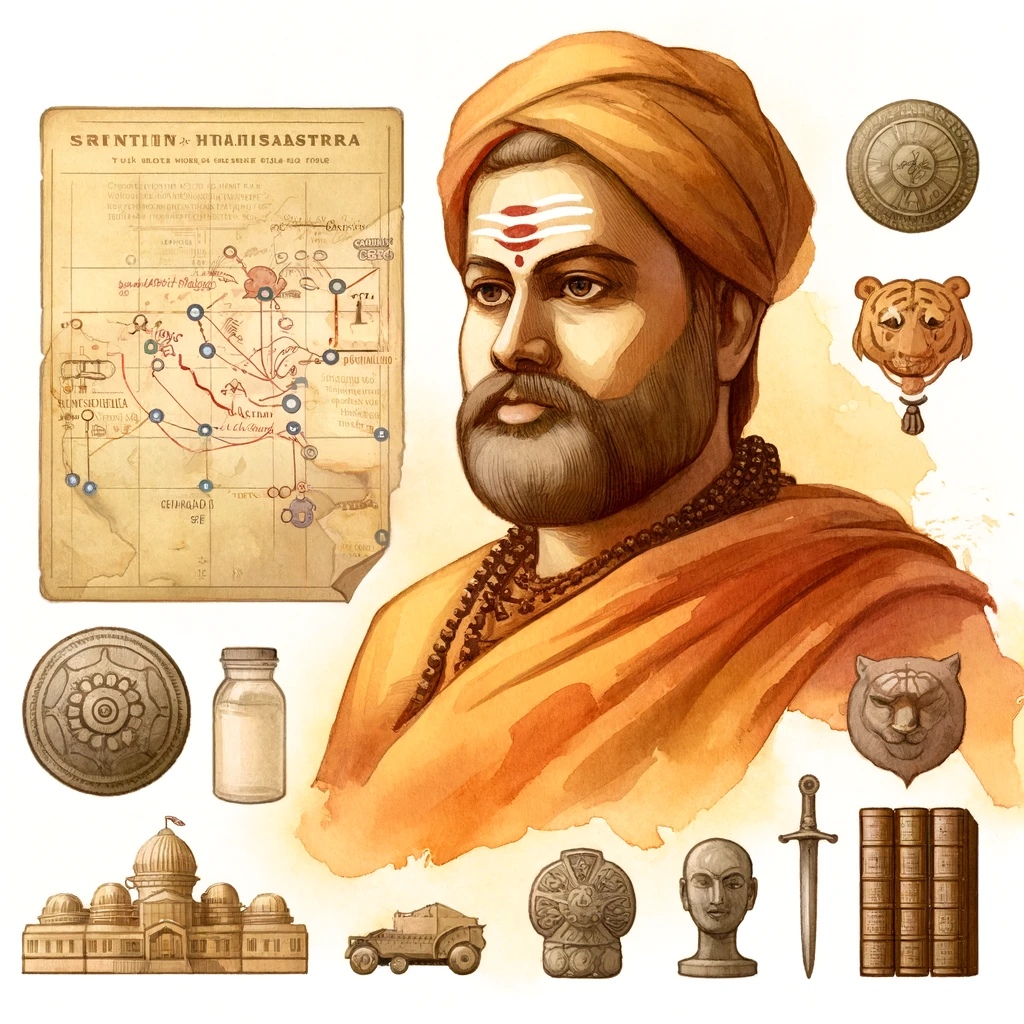The Mauryan Period marks a significant era in ancient Indian history, characterized by the establishment and expansion of the Mauryan Empire, which became one of the largest empires in the Indian subcontinent. Founded by Chandragupta Maurya, the empire flourished under his leadership and that of his successors, most notably Bindusara and Ashoka. The role of Chanakya and his treatise, the Arthashastra, was instrumental in the foundation and governance of this powerful empire.
- The Origin of Mauryan Empire took place in 322 BCE when Chandragupta Maurya overthrew the Nanda Dynasty.
- The empire expanded rapidly, covering much of the Indian subcontinent. Chandragupta’s reign was marked by efficient administration and economic prosperity.
- The Mauryan Empire reached its peak under Ashoka the Great, who spread Buddhism and promoted non-violence after the Kalinga War.
Foundation and Expansion of the Mauryan Empire

Chandragupta Maurya
Foundation of the Empire:
- Chandragupta Maurya was the founder of the Mauryan Empire around 321 BCE. He rose to power by overthrowing the Nanda Dynasty, which ruled the Magadha region in present-day Bihar.
- According to historical accounts, including those by the Greek historian Megasthenes, Chandragupta was a dynamic and ambitious leader who unified various small kingdoms and republics to create a vast empire.
Conquests and Expansion:
- Chandragupta’s conquests began with the defeat of the Nanda king Dhana Nanda, followed by the annexation of the territories in the northwestern part of the subcontinent, which were under Greek control following Alexander the Great’s retreat.
- He extended his empire to include regions of modern-day Afghanistan, Pakistan, and northern India, establishing control over the Indus Valley and beyond.
Administration:
- Chandragupta established a centralized administration with a hierarchical bureaucracy, ensuring efficient governance and control over his vast empire. The capital of his empire was Pataliputra (modern-day Patna).
- He maintained a large standing army and implemented a system of espionage to keep a check on regional governors and officials.
Bindusara
Succession:
Chandragupta’s son, Bindusara, succeeded him around 297 BCE. Bindusara inherited a vast and well-administered empire and continued the expansionist policies of his father.
Further Expansion:
- Bindusara extended the Mauryan Empire southwards, bringing much of the Deccan plateau under Mauryan control. His conquests included regions corresponding to modern-day Karnataka and Andhra Pradesh.
- Bindusara maintained diplomatic relations with Hellenistic kings, including the Seleucid Empire, fostering trade and cultural exchanges.
Governance:
Bindusara upheld the administrative structures established by Chandragupta. His reign is noted for the stability and prosperity of the Mauryan Empire, setting the stage for his son Ashoka’s remarkable reign.
Role of Chanakya and Arthashastra

Chanakya
Mentorship and Strategy:
- Chanakya, also known as Kautilya or Vishnugupta, was a Brahmin scholar and the chief advisor to Chandragupta Maurya. He played a crucial role in the establishment of the Mauryan Empire.
- Chanakya is renowned for his strategic acumen and political wisdom. He is credited with masterminding the overthrow of the Nanda Dynasty and guiding Chandragupta to consolidate his rule.
Diplomatic and Military Tactics:
- Chanakya’s strategies included forging alliances, employing espionage, and using psychological warfare to weaken the enemies. His counsel was pivotal in defeating the Greek satraps left behind by Alexander and securing the northwestern territories.
Arthashastra
Authorship:
The Arthashastra, attributed to Chanakya, is an ancient Indian treatise on statecraft, economic policy, and military strategy. Written in Sanskrit, it is one of the most comprehensive texts on governance and administration from ancient India.
Content and Significance:
- The Arthashastra covers a wide range of topics, including the duties of a king, the functioning of a bureaucracy, economic management, foreign policy, military strategy, and legal principles.
- It emphasizes the importance of realpolitik and pragmatic governance, advocating for a ruler’s responsibility to maintain law and order, protect the state, and ensure the welfare of the people.
Legacy:
- The principles outlined in the Arthashastra influenced the administration and governance of the Mauryan Empire. Its emphasis was on espionage, efficient bureaucracy, and strategic diplomacy of the empire.
- The text remains a significant source of historical knowledge. It continues to be studied for its insights into ancient Indian political thought and administration.
Conclusion
The foundation and expansion of the Mauryan Empire under Chandragupta Maurya and Bindusara set the stage for one of the most powerful and well-administered empires in ancient Indian history. The strategic guidance of Chanakya and the principles outlined in the Arthashastra played a critical role in establishing a stable and prosperous empire. For UPSC aspirants, understanding the Mauryan Period is crucial for appreciating the complexities of ancient Indian polity and the significant contributions of this era to Indian history.


